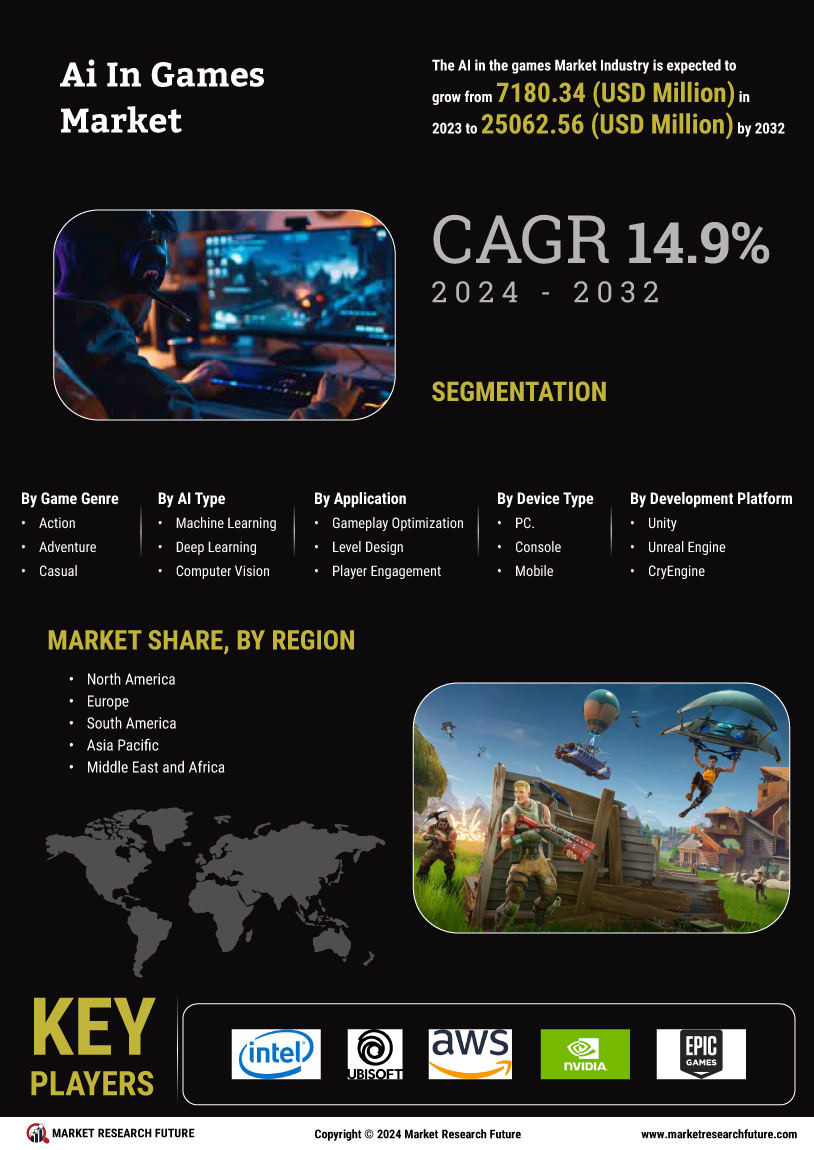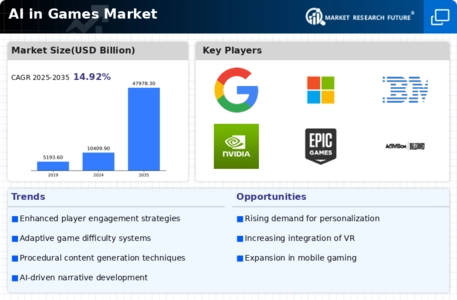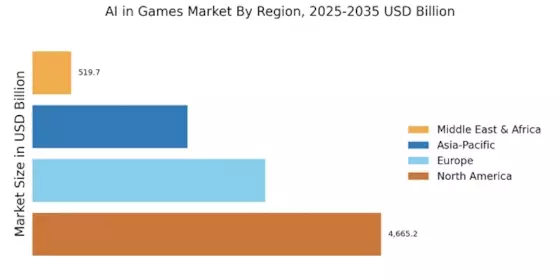Emergence of Cloud Gaming
The emergence of cloud gaming is transforming the AI in Games Market Industry. This technology allows players to access high-quality games without the need for powerful hardware, making gaming more accessible. AI plays a vital role in optimizing game performance and delivering personalized experiences in cloud environments. As cloud gaming platforms expand, the integration of AI technologies becomes essential for managing server loads and enhancing user experiences. The cloud gaming market is anticipated to grow to USD 8 billion by 2025, driven by the increasing demand for seamless gaming experiences. This shift towards cloud-based solutions indicates a promising future for the AI in Games Market Industry, as developers leverage AI to enhance gameplay across diverse platforms.
Advancements in AI Technology
Technological advancements in AI are significantly influencing the AI in Games Market Industry. Innovations in machine learning, natural language processing, and computer vision are enabling developers to create more sophisticated game mechanics and realistic character behaviors. For instance, AI-driven algorithms can now analyze vast amounts of player data to predict preferences and improve gameplay. The market for AI in gaming is expected to grow at a compound annual growth rate of 30% from 2025 to 2030, reflecting the increasing integration of AI technologies. This rapid evolution suggests that as AI capabilities expand, so too will the potential for creating more engaging and complex gaming experiences, thereby propelling the AI in Games Market Industry forward.
Growing Popularity of Esports
The rise of esports is reshaping the AI in Games Market Industry. As competitive gaming gains traction, there is an increasing need for advanced AI systems that can analyze player performance and enhance training methods. AI technologies are being utilized to create intelligent coaching systems that provide real-time feedback to players, thereby improving their skills. The esports market is projected to reach USD 1.5 billion by 2027, indicating a robust growth trajectory. This trend suggests that as esports continue to flourish, the demand for AI-driven solutions will likely increase, further propelling the AI in Games Market Industry and creating new opportunities for innovation.
Rising Demand for Immersive Experiences
The AI in Games Market Industry is witnessing a notable surge in demand for immersive gaming experiences. Players increasingly seek games that offer rich narratives and dynamic environments. AI technologies facilitate this by enabling adaptive storytelling and responsive game worlds. According to recent data, the market for immersive gaming is projected to reach USD 300 billion by 2026, with AI playing a pivotal role in enhancing player engagement. This trend indicates a shift towards more personalized and interactive gameplay, where AI algorithms analyze player behavior to tailor experiences. As developers integrate advanced AI systems, the potential for creating unique gaming experiences expands, thereby driving growth in the AI in Games Market Industry.
Increased Investment in Game Development
Investment in game development is a crucial driver for the AI in Games Market Industry. As gaming becomes a more lucrative sector, developers are allocating substantial resources towards integrating AI technologies. This influx of capital allows for the exploration of innovative gameplay mechanics and enhanced graphics. Recent statistics indicate that the global gaming industry is expected to surpass USD 200 billion by 2025, with a significant portion of this growth attributed to AI-driven projects. The focus on developing AI-enhanced games not only attracts players but also encourages collaboration among tech companies and game developers, fostering a vibrant ecosystem that supports the AI in Games Market Industry.


















Leave a Comment